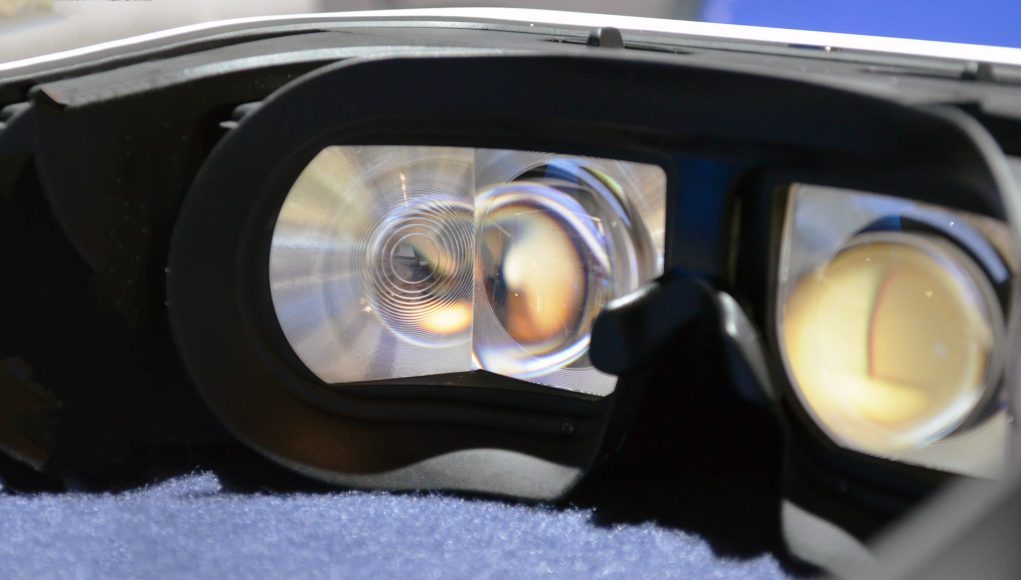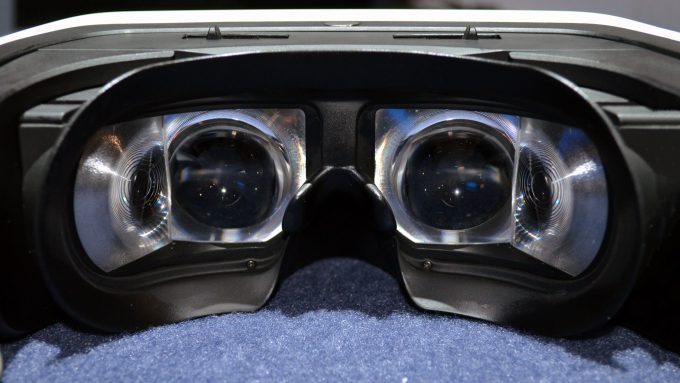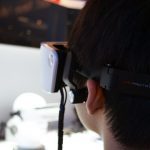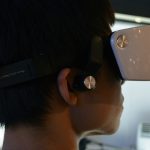At CES 2017 Panasonic showed off a new VR headset prototype with a 220 degree FOV derived from four displays and a rather unique set of lenses. I was able to try the headset myself, and while it seemed that there’s certainly still work to be done, there might be some merit to their method.
The headset—which is actually quite compact for the provided field of view—uses four individual displays (two per eye) each at 1600×1440, for a total resolution of 6400×1440. In order to add peripheral vision, they’re using two lenses which are fused together to make one lens per eye. The lenses seem to be a combination of traditional aspheric and Fresnel optics.
The horizontal field of view was among the widest I’ve seen in any VR headset, including StarVR, but the vertical field of view was lower, almost distractingly so. In addition, the physical fusion between the lenses was imperfect, resulting in high distortion and warping along the vertical seams where they met. If I made sure the IPD and tilt were adjusted right, and viewed a VR scene without moving my head, they almost seemed to vanish, but immediately became noticeable and distracting again once I began to move my head. The distortion profile for warping the image to match the lenses also appeared slightly wrong (or perhaps is just very difficult to achieve with fused lenses like this), which prevented me from being immersed. There was also some latency to the head tracking which further threw things off, but as a prototype headset I wasn’t too concerned about the head tracking latency.
With that said, the horizontal field of view was still interesting to see, and unlike other high FOV headsets I’ve tried, like the StarVR and Pimax 8K, this headset actually had a decent amount of binocular overlap (the regions of your vision which both eyes can see), meaning that it didn’t feel as much like I had a blinder in between my eyes. That may be one of the advantages to their approach, not to mention achieving a fairly compact form-factor.
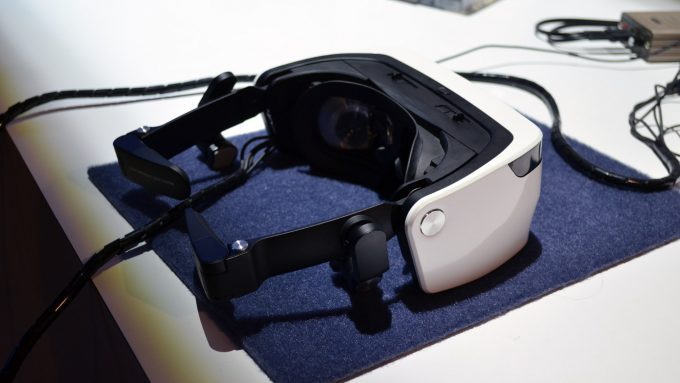 Getting a high FOV without extremely expensive and complex optics, optics with many artifacts and even more distortion, and other problems, has shown to be a challenge. High FOV headsets that use only two screens like the StarVR and Pimax 8K have shown that distortion and artifacts are harder to deal with at such a high FOV, and that binocular overlap is challenging to get higher. Since they’re probably already pushing the panels as physically close together as possible, the only way to increase binocular overlap would be to increase the magnification of the lenses, which could then mean increasing the intensity and amount of artifacts and distortion. Without a more novel approach or breakthrough in optics, it’d be hard to get around those problems.
Getting a high FOV without extremely expensive and complex optics, optics with many artifacts and even more distortion, and other problems, has shown to be a challenge. High FOV headsets that use only two screens like the StarVR and Pimax 8K have shown that distortion and artifacts are harder to deal with at such a high FOV, and that binocular overlap is challenging to get higher. Since they’re probably already pushing the panels as physically close together as possible, the only way to increase binocular overlap would be to increase the magnification of the lenses, which could then mean increasing the intensity and amount of artifacts and distortion. Without a more novel approach or breakthrough in optics, it’d be hard to get around those problems.
That’s where Panasonic’s approach might help. By using two displays of differing angles, it’s easier to create higher magnification optics, but since they’re not using displays that actually bend, they have to fuse the separate displays and optics together, which then results in problems of distortion and warping that this prototype has demonstrated. If they can somehow fuse the optics together perfectly without the distortion at the seam, and without a visible physical seam in the display itself, then it might just be a viable solution to high FOV VR, but that’s a big “if”. In the future it may be easier to develop such a system with a curved display instead of two individual displays per eye, but that’s likely to bring its own challenges.
The Panasonic headset also had an interesting mounting system which didn’t use any over-the-head straps, but rather some folding arms which clamped behind your head. It didn’t seem exceedingly comfortable, but as Panasonic says this headset is intended for enterprise purposes, it’s likely designed to go on and off the head quickly. We’d also guess the same reason for the choice of bone-conduction headphones, which vibrate near your ear to produce sound rather than going on or over your ear. That would leave the user’s ears wide open to hear colleagues outside of the headset.
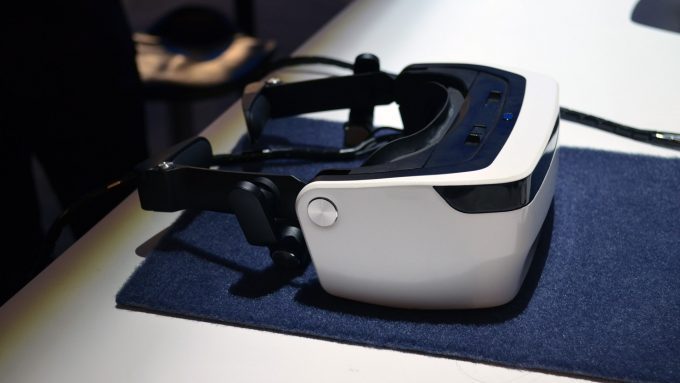 Panasonic’s goals for this headset so far are in the business, training, education, medical, and professional markets. The company says they’re to ship in 2018, but it’s clear there’s much more work to be done between now and then to make this headset more than a prototype.
Panasonic’s goals for this headset so far are in the business, training, education, medical, and professional markets. The company says they’re to ship in 2018, but it’s clear there’s much more work to be done between now and then to make this headset more than a prototype.

